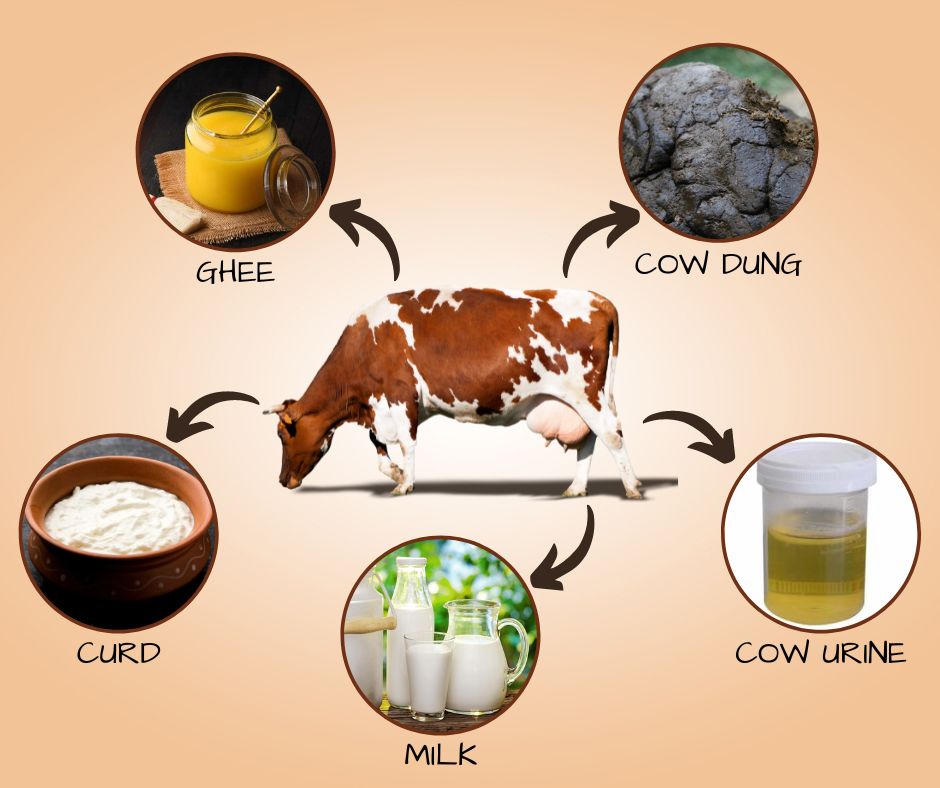
The use of chemical fertilizers and pesticides have escalated beyond safety level in modern industrial farming, posing threat to both the environment and mortal beings. While these agricultural chemical pollutants are degrading soil, air, water, etc. on one hand, living organisms are being exposed to various health hazards on the other. In such aggravating condition, both the Earth and her dwellers need some treatments of nature that not only heal them but also augment the agricultural productivity. Panchagavya, an organic formulation, is one among them.
Indian culture and some other Hindu cultures have long story of using Panchagavya as medicine but it serves as an organic fertilizer and pesticide in the farming world. The word Panchagavya is derived from Sanskrit origin where “Panch” means five and “Gavya” refers to cow products viz. cow dung, urine, milk, curd and ghee. Panchagavya is the collective word for all of these products, which are each referred to as “Gavya”. The right amounts of these five constituents properly blended together function as a remarkable organic fertilizer that boosts both soil health and plant growth. In order to increase microbial activity in soil, few other ingredients which serve as fermenter such as jaggery, banana, tender coconut water are added to the Panchagavya.
What are the ingredients essential for the preparation of Panchagavya (20ltr)?
- Cow dung – 5kg
- Cow urine – 3ltr
- Cow milk – 2ltr
- Cow curd – 2ltr
- Cow ghee – 1kg
- Well ripen banana – 1 dozen (12 pieces)
- Tender coconut water – 3ltr
- Jaggery – 1/2kg (or Sugarcane juice – 3ltr)
How is Panchagavya prepared?
- The deliberate amount of cow dung(5kg) and ghee(1kg) is mixed in a container and stirred thoroughly twice a day (morning and evening hours) for about three to four days to enable aerobic bacterial activity during the fermentation process.
- Cow urine(3ltr) along with water(5ltr) is added to the container on the fourth or fifth day and mixed well by stirring for 20 to 30 minutes twice a day for another 7 to 8 days.
- Then the mixture is left undisturbed for about 15 days for the process of fermentation.
- After 15 days, rest of the ingredients like milk, curd, jaggery, banana and tender coconut water are added and again mixed properly by stirring twice a day for about 30 days. After that, panchagavya is ready to use.
What is the right way of using Panchagavya?
- Panchagavya can be applied to soil or plants only after diluting with water. A 2-3% solution (i.e., 20-30ml Panchagavya solution in 1000ml water) is best recommended. The diluted solution can be sprayed in plants or directly applied to the soil. Seed treatment can also be done by soaking seeds in the solution for few minutes before sowing.
What are the benefits of Panchagavya?
- Application of panchagavya enhances fertility status of soil by increasing macronutrients, micronutrients and beneficial microorganisms which helps in ameliorating soil health and fertility.
- Since panchagavya works as organic manure, it improves water holding capacity of soil.
- It increases nutrient uptake in plants fostering plant growth and development.
- It aids in synthesis of growth promoting substances which consequently result in improved growth and yield attributes ultimately increasing the crop yield.
- It boosts plant immunity, conferring resistance to pests and diseases, and also delivers a number of useful metabolites produced by microorganisms, such as organic acids, hydrogen peroxide, and antibiotics that are effective against a variety of pathogenic microorganisms.
- It is an eco-friendly approach which also minimizes cost of cultivation by avoiding cost of chemical fertilizers, pesticides, fungicides, growth regulators, etc.
